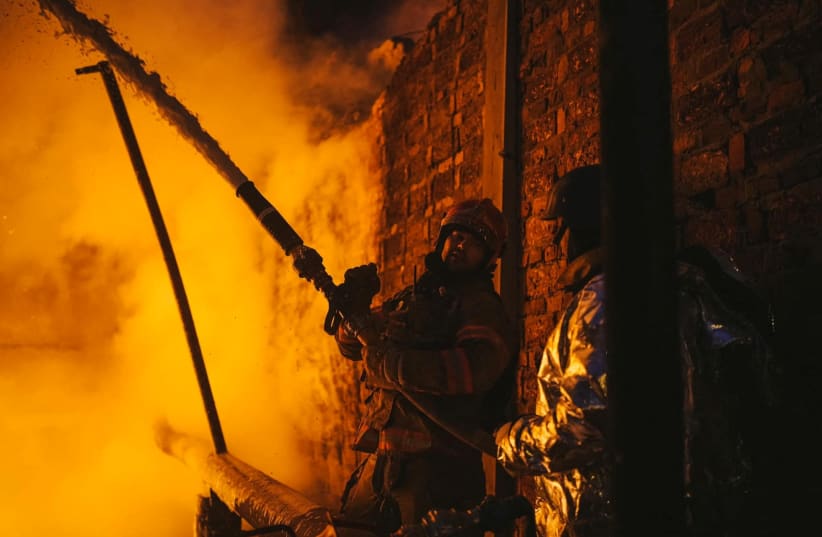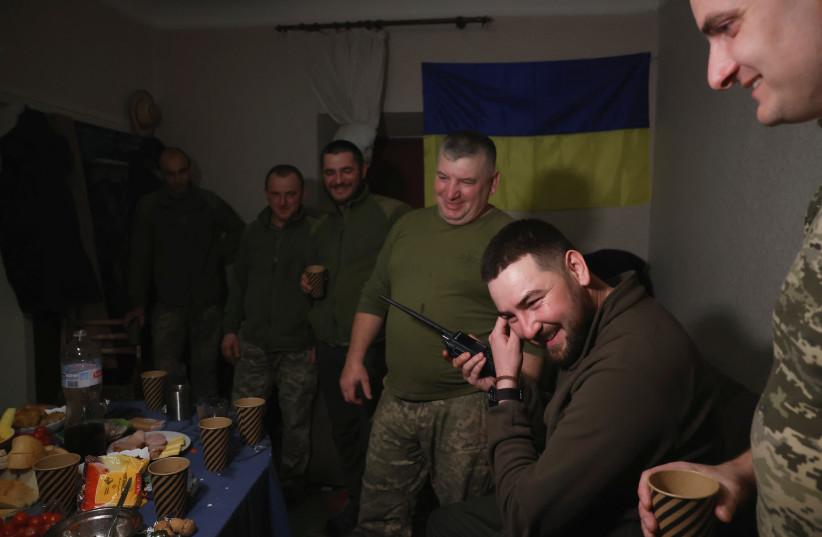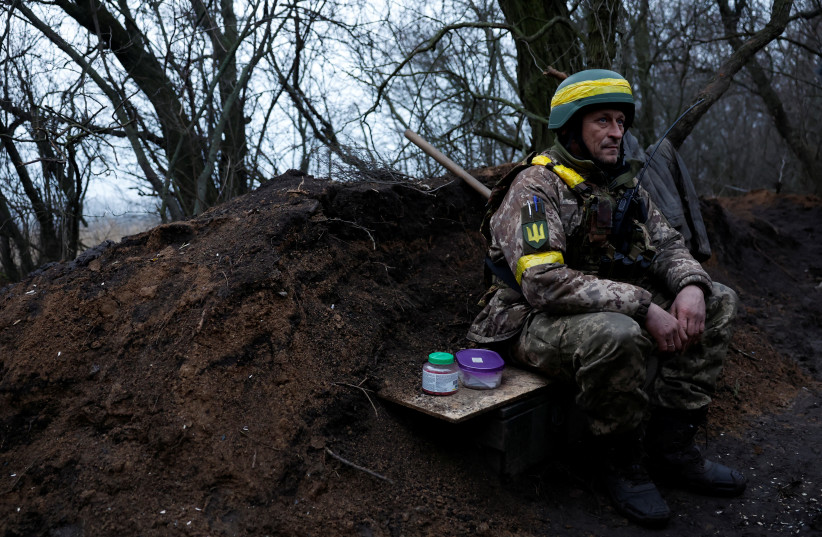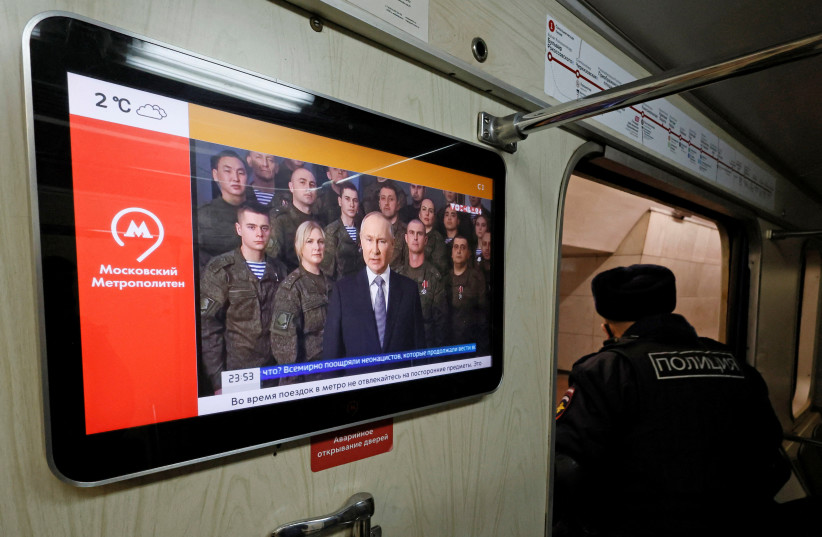Russia is increasingly relying on missiles and drones to attack Ukraine, apparently abandoning any real war aims except to make Ukrainian civilians suffer. This new tactic relies on lobbing missiles and drones at civilians and civilian infrastructure with no pretense that the targets are military ones.
One of the features of this campaign can be seen in the use of Iranian drones. Saddam Hussein’s Iraq targeted Iran’s cities in a method similar to Russia’s targeting of Ukraine’s.
Russia continued to launch missile attacks against Ukraine on New Year’s Eve.
“Shortly after midnight, air-raid alerts sounded in the capital, followed by a barrage of missiles that interrupted Ukrainians’ small celebrations at home,” a report said.
According to CBS, “Ukrainian officials say Russia is now deliberately targeting civilians, seeking to create a climate of fear and destroy morale.”
However, Russia’s attacks don’t seem to be reducing Ukraine’s morale. In fact, Ukraine is as staunch in its defense as it was at the beginning of the war, and Ukrainians only strengthened their resolve in 2022.
Russia likely knows that its invasion of Ukraine has had the opposite effect of what was originally intended.
Moscow believed it could decapitate Kyiv within a few weeks with surprise helicopter assaults and a massive line of armored vehicles staged from Belarus. Russia was disappointed when it failed to take Kyiv, and it shifted strategy to the south, destroying Mariupol and linking Crimea to the Donbas front.
It then began annexing territory and settled in for a long war. As winter approached, Russia switched strategies again, and suffering blows from Ukraine’s counteroffensives, decided to rely on Iranian drones and its own stocks of missiles to target civilians in Ukraine.
The historical context and beyond
Is this really how countries usually wage war? Terrorizing civilians, driving them from their homes and laying waste their lands is certainly one of the archetypes of medieval warfare or the period of more ancient empires.
Rome, for example, destroyed Carthage by sowing salt into the land. Ancient warfare is filled with examples of mass destruction, such as what Alexander the Great did to Persepolis and Tyre. Cities would be razed and the inhabitants sold into slavery.
RUSSIA’S INITIAL campaigns were tremendously destructive. The documented transfer of thousands of Ukrainian children to Russia can also be seen as an attempt to lay waste to Ukraine and transfer its inhabitants, in contravention of the Geneva Conventions. However, Moscow has largely been held back by Ukraine’s army and has therefore shifted it strategy.
Can Moscow’s war, then, be compared to other past examples of sieges and wars of attrition?
Israel and Egypt fought a war of attrition from 1967 to 1973. Iran and Iraq bludgeoned each other to exhaustion in the 1980s. In the Uruguayan Civil War, the siege of Montevideo lasted almost 10 years, from 1843 to 1851. When the Western powers fought Nazi Germany and Japan, they subjected both countries to massive bombardment. The US also ordered Operation Linebacker II, the Christmas bombing of Hanoi in 1972, in an effort to bring Vietnam back to the “peace” table.
So does Moscow’s strategy have parallels with these examples?
Similar to the “war of the cities,” when Iraq used its air force to terrorize Iranian cities in the Iran-Iraq War (1980-1988), Russia is trying to terrorize Ukraine’s civilians. Iraq likely knew it wouldn’t win the war by harassing Iran’s civilians; it merely wanted to inflict suffering on them.
Russia also seems intent on inflicting suffering, something that isn’t “strategic” or a result of “precision” bombing. Russia is purposely targeting infrastructure – in the winter – to make Ukrainians suffer in the brutal cold. Moscow is using drones that don’t have large warheads. It is an effort to terrorize people more than it is to “win” a war.
This means that Russia’s policy today lacks strategy. Moscow might plausibly be planning a new offensive in February or searching for some kind of strategy and tactic. Meanwhile, it knows that Ukraine is continuing to receive Western arms.
With each passing day, Ukraine receives better weapons, and Russia remains the same. Russia can’t outproduce the West and doesn’t even appear to be attempting attrition against the West in Ukraine. Iranian drones, for example, are not being used in complex swarms. Russia seems to prefer to strike at soft targets instead of trying to defeat the Ukrainian armed forces.
Putin's Happy New Year
Russia’s New Year’s message, broadcast on Saturday, was partly about normalcy and partly about the war. Russian President Vladimir Putin appeared alongside soldiers. He spoke of defiance and conspiracy, and he portrayed the West as waging a proxy war against Russia.
THIS IS a new type of interpretation for Moscow. It invaded Ukraine and has caused millions to suffer, but according to its own analysis, Russia is the victim.
A message of strength was broadcast on other Russian media, portraying Russia as having weathered the storm of Western sanctions and aggression – while Russia continues as the aggressor.
This attempt to reframe the invasion as a defensive war in which Russia is the victim is part of the Moscow narrative. Having annexed areas of Ukraine, Russia can now pretend to be “defending” its lands. Moscow has claimed that it won’t sit at peace talks if the annexed areas are on the agenda. In essence, it is trying to force Ukraine to negotiate over how much land Ukraine will lose.
If the Moscow mentality continues along this line, portraying the Ukraine war as defensive while lobbing missiles and drones at Ukraine to keep Kyiv on the defensive, it’s not clear what the way out of the war will be.
Some Western politicians and experts are keen on insisting that all wars end in diplomacy and end as a result of talks. This is also the message of former German chancellor Angela Merkel, who recently claimed that it was better to have tried diplomacy with Moscow before the war, even if it failed.
But it’s not true that all wars end in diplomacy. The Confederacy of the US South wasn’t defeated with diplomacy, and neither was Germany in 1945. Moscow is gambling that its war in Ukraine, waged entirely in Ukraine and causing Ukrainians to suffer, will eventually result in talks that legitimize Moscow’s actions.
This is the “frozen” conflict strategy Russia has used elsewhere before, such as in Georgia. If the long-term strategy for Moscow is a frozen front line, and continually shelling Ukraine’s cities to cause suffering, then the West and Ukraine will have to come up with a way to reduce this threat.
Countries such as Israel, faced with enemies who lob missiles at its civilian areas, have constructed complex, integrated air defenses. Even Israel has learned that these defenses have a limit, and that they are costly in the long run.
Even if air defenses can stop Moscow’s campaign of spreading suffering, they won’t likely end the war.



